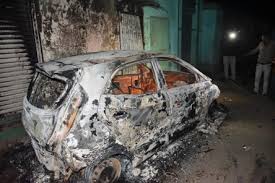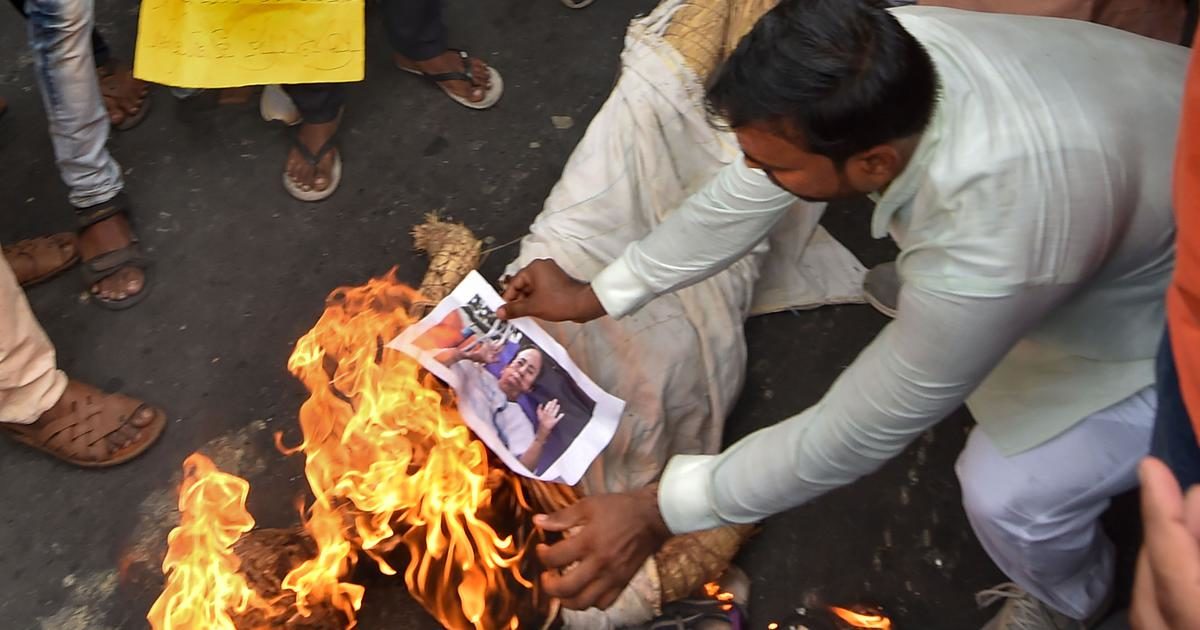Source: hindustantimes.com
More than 12 people, including four policemen, were injured in brick batting and four vehicles were set on fire in the state capital Patna, according to officials.
Violence broke out in three separate districts of Patna, Kaimur and Muzaffarpur in Bihar during processions to immerse the idol of Goddess Saraswati late on Friday, officials said.
More than 12 people, including four policemen, were injured in brick batting and four vehicles were set on fire in the state capital Patna, according to officials.
Police said the clash started between students of the Patna University and locals in the Lalbagh area as residents allegedly chased them from the spot and they pelted stones at each other during the procession.
Another group of students later started firing and hurled bombs, which led to chaos in the surrounding areas. Bricks and stones were seen scattered on the Ashok Rajpath near Lalbagh after the violence.
Eyewitnesses said students ransacked several tea stalls, coaching institutes and a private eye-hospital during the violence.
The students, on their part, alleged they were attacked by the people of Lalbagh when they had gone to immerse the idol.
They said when students of Minto, Nutan and Jackson hostels reached Lalbagh area, residents started hurling stones and bombs at them. They then retaliated to the attack.
The brawl, which went on for more than two hours, left a sub-inspector, three constables, student Chandra Sekhar and a passersby injured. The injured policemen were admitted to Patna Medical College and Hospital (PMCH) and others were referred to Nalanda Medical College & Hospital (NMCH).
Inspector general of police (Central Zone) Sanjay Singh, Patna district magistrate Kumar Ravi and senior superintendent of police (SSP) Upendra Sharma rushed to the spot with reinforcement and pacified the crowd. Police also used mild lathicharge to disperse the mob.
IG Sanjay Singh said Rapid Action Force (RAF) personnel have been deployed to keep the situation in control. Sharma said preliminary investigation revealed that students of Minto and Saidpur hostels were involved in the firing and hurling bombs.
Reports from Kaimur said there was tension in a village after a group allegedly pelted stones at an idol, which was said to be damaged. After this, people from two communities indulged in brick batting and firing leading to the injury of a half dozen people.
Sub-divisional officer J Shukla said the situation is under control and additional police force deployed as a precautionary measure.
In Muzaffarpur, tension gripped BRA University after two groups clashed during idol immersion procession when students fired and pelted stones each and other. Many students were injured in the clash.
Muzaffarpur’s SSP Jayant Kant said the incident was a fallout of rivalry between two groups of students.
“Efforts are on to ascertain the identity of the attackers, who managed to escape after the incident,” Kant said.

